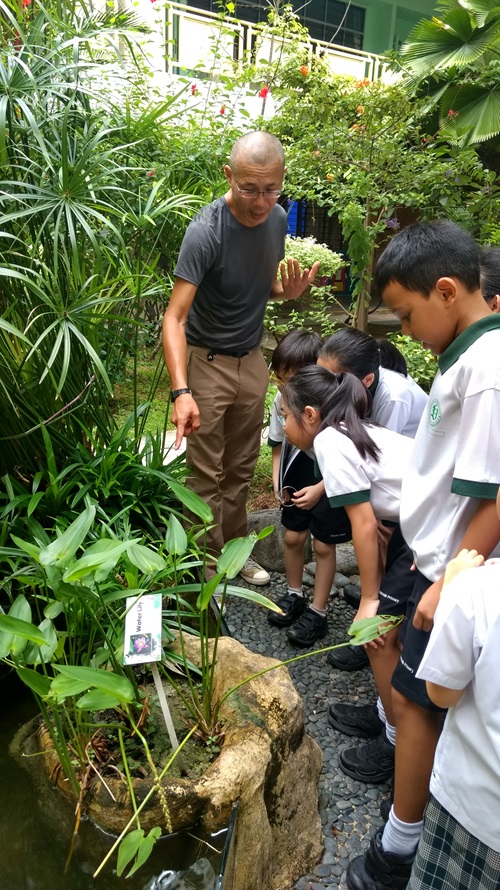Introduction
Attract more wildlife to your school with our Greening Schools for Biodiversity (GSB) programme! Open to all primary schools (upper primary), secondary schools and junior colleges, GSB involves the targeted planting of native, biodiversity-attracting plants. Students and teachers also get to learn how to identify the different species which can be found in their school communities.
This greening process brings students and teachers closer to nature without leaving their school yard, and at the same time creates habitats for plants and animals. The resultant green network can also act as link-ways for wildlife movement between nature areas.
Another important component of the programme is outreach, where students implement initiatives to raise appreciation and awareness of biodiversity within their school grounds and among their peers.
Each cycle of the programme is 12 months long, and schools are encouraged to adopt it for at least two to three years.
Objectives
This programme aims to:
- Encourage teachers and students to learn, appreciate and support local biodiversity;
- Encourage student participation in caring for their school grounds and the environment; and
- Promote exchange of information and expertise in enhancing biodiversity in schools.
Programme Stages
Training
Training is provided for teachers, which prepares them to guide their students through the programme. Teachers' workshops cover an introduction to native biodiversity, basic identification of flora and fauna, as well as techniques in conducting biodiversity surveys. There is also an outdoor guided walk component to familiarise teachers with creating biodiversity trails. After the workshops, teachers are expected to train their students using the materials provided, so that they have a sufficient understanding of native biodiversity to carry out the programme.
Biodiversity Audit
Students are to conduct at least two biodiversity audits for each programme cycle:
- 'BioBlitz for Schools', held in conjunction with 'Biodiversity Week for Schools' in May; and
- A second audit, to be conducted at least three months after 'BioBlitz for Schools' for monitoring purposes.
During the audits, students survey the flora and fauna found in their school and record their observations. The SGBioAltas mobile app and data sheet are used to aid in identification and data recording. Through these activities, students gain hands-on experience in conducting wildlife surveys while honing their observational skills.

Customised Horticultural Session
Customised Horticultural Sessions are conducted by horticulturists engaged by NParks, and offer modules such as 'Guided walk in school grounds', 'Plant propagation', and 'Designing a planting layout plan'.

Greening
Schools are to carry out greening on selected plot(s) within their compound after completing all training workshops and the baseline biodiversity audit. Greening can involve planting biodiversity-attracting flora, propagating existing plants, or building floating wetlands in the school's aquatic habitats.
Building/Enhancing and Implementing the Biodiversity Trail
During the final phase of the programme, students are to create a biodiversity trail (or enhance an existing one) in their school, with their teachers' guidance. Students are then expected to conduct a guided walk of the trail for their peers or members of the community, thereby gaining a deeper appreciation of the urban wildlife found around them.
Compiling the Greening Schools Journal
At the end of the programme, both teachers and students are to submit reflections documented and photographs taken throughout their Greening journey using the template provided. Teachers are also expected to provide feedback on the programme.
For more information or to register your interest for this programme, write to us at
CIN@nparks.gov.sg.